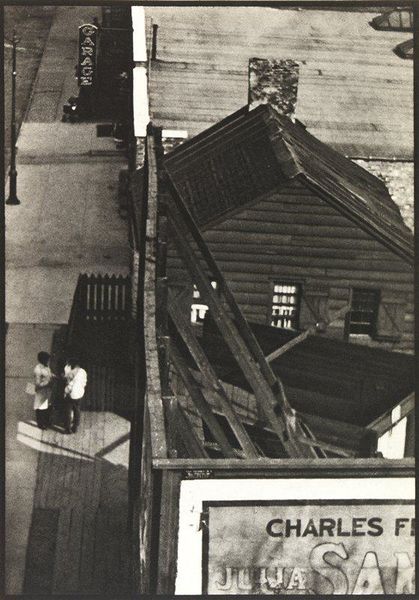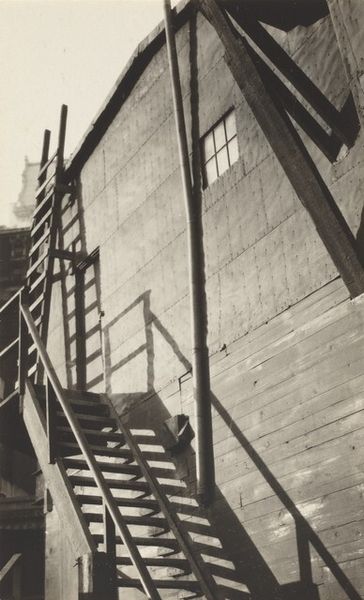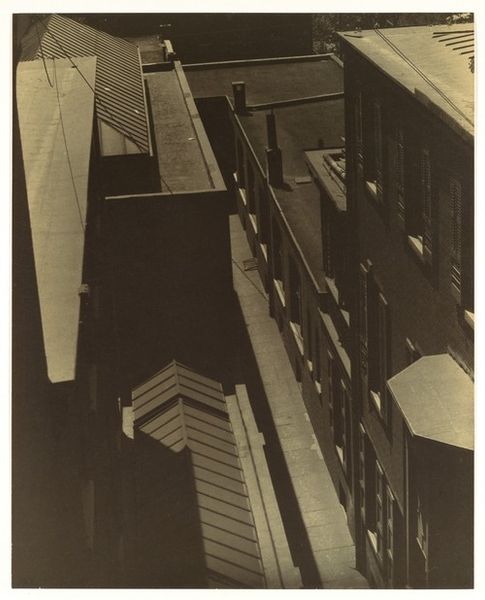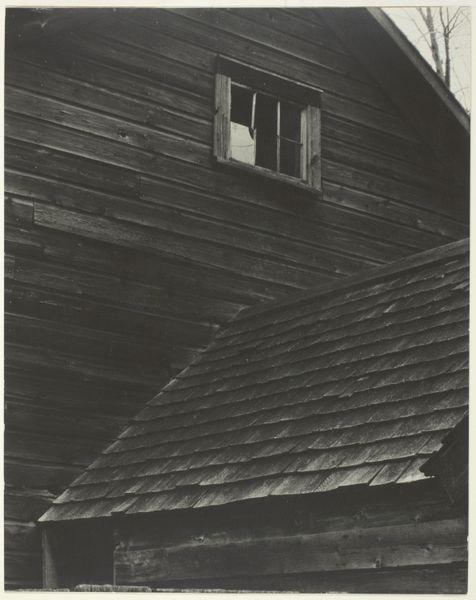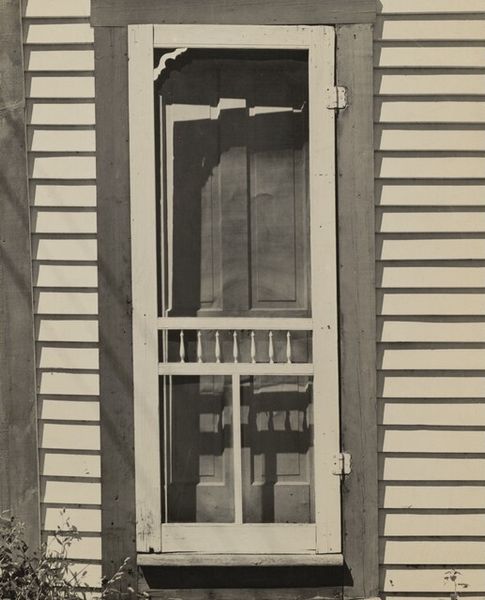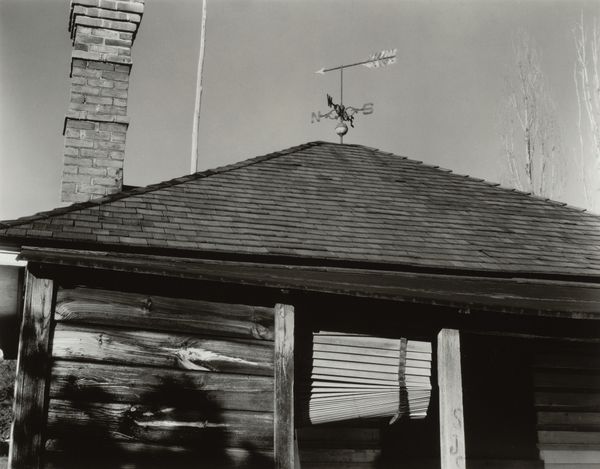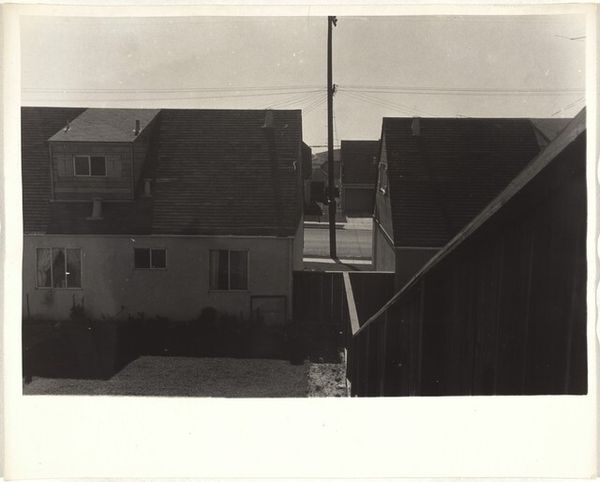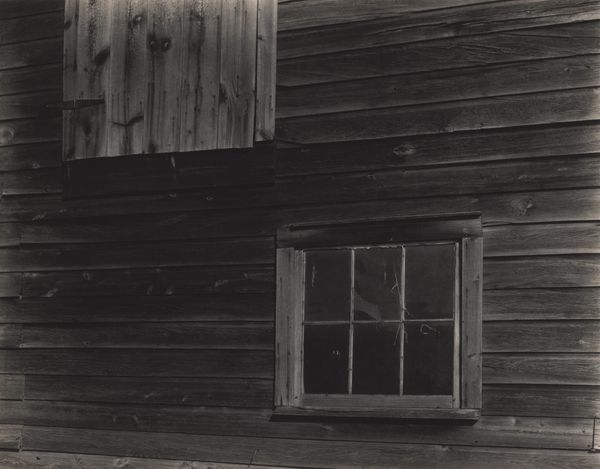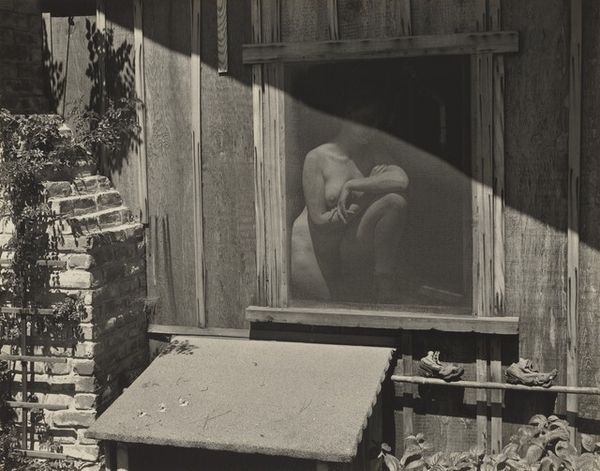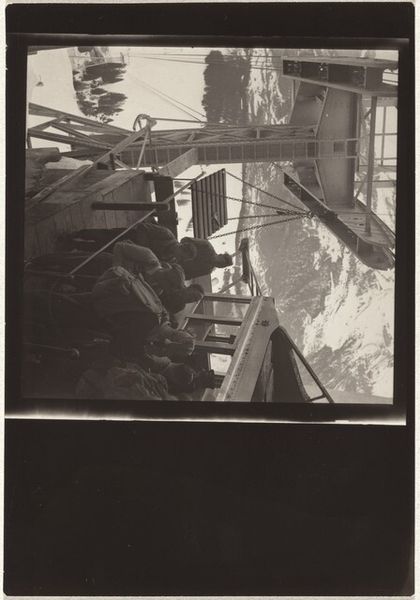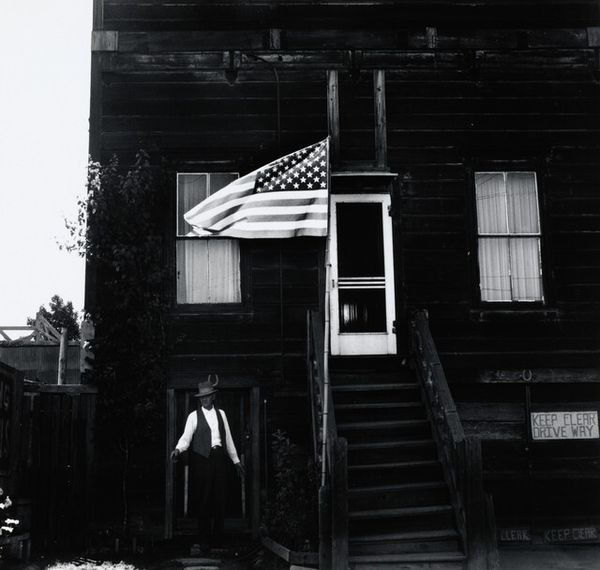
print, photography
# print
#
photography
#
monochrome photography
#
cityscape
#
modernism
#
realism
#
monochrome
Dimensions: image: 23.5 × 16.5 cm (9 1/4 × 6 1/2 in.) sheet: 29.8 × 20.7 cm (11 3/4 × 8 1/8 in.)
Copyright: National Gallery of Art: CC0 1.0
Editor: This is Paul Strand's "From the Viaduct, New York," likely taken between 1916 and 1917. It’s a photograph, a print of a city scene in black and white. The perspective is so striking; it’s from above, almost voyeuristic. What do you see in this piece? Curator: I see a pivotal moment in American Modernism. Strand, like many artists of his time, was grappling with the rapidly changing urban landscape. Think about the social context – the rise of industrialization, immigration, and a new, uneasy relationship between people and the built environment. The stark angles and high vantage point reflect this disjunction. Editor: So the viewpoint isn't just aesthetic? Curator: Not at all. It speaks to the alienation that many felt in the face of modernization. Consider also the fragmented, almost cubist quality of the composition. Is Strand perhaps suggesting that the traditional ways of seeing and understanding the world were no longer adequate in this new era? Editor: The high angle flattens the scene and makes me a bit dizzy. Curator: Exactly. It disrupts traditional perspective and draws our attention to the abstract patterns within the urban chaos. What social narratives are subtly embedded here, in your opinion? Who gets to have a 'view from above'? What are they watching? Editor: The buildings almost seem to press in on the people below, maybe showing the growing disparity in space and resources between the city's inhabitants. The lack of color really adds to the stark, alienated feeling too. Curator: Precisely. This photograph, while seemingly a straightforward depiction of a city scene, is a powerful statement about the social and psychological impact of modernity. Editor: I never thought about it that way. Now I see it as much more than just a picture of a city. Curator: And that’s the beauty of art, isn’t it? It challenges us to look beyond the surface and engage with the deeper cultural and historical forces at play.
Comments
No comments
Be the first to comment and join the conversation on the ultimate creative platform.
